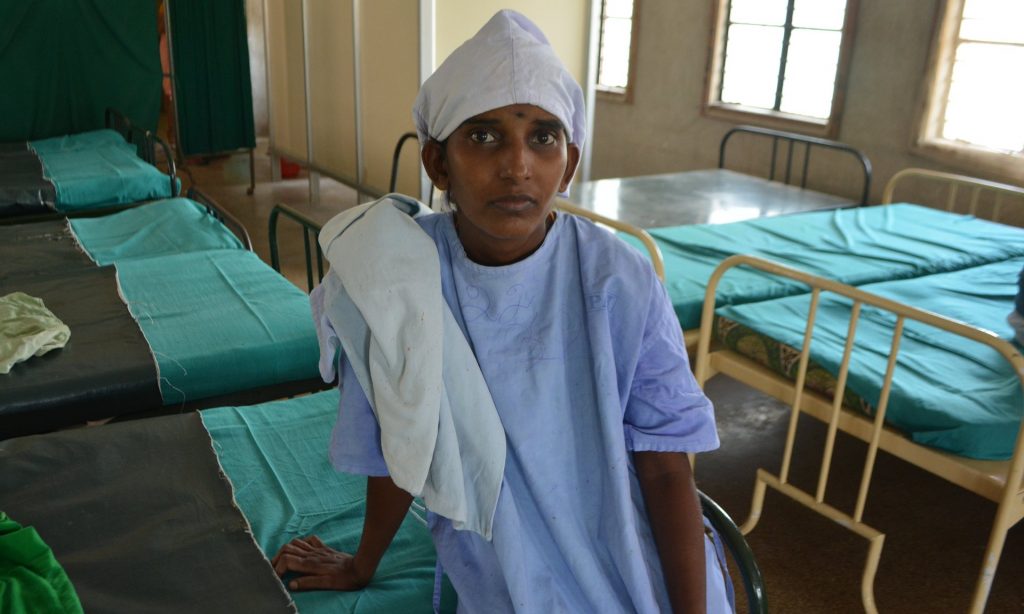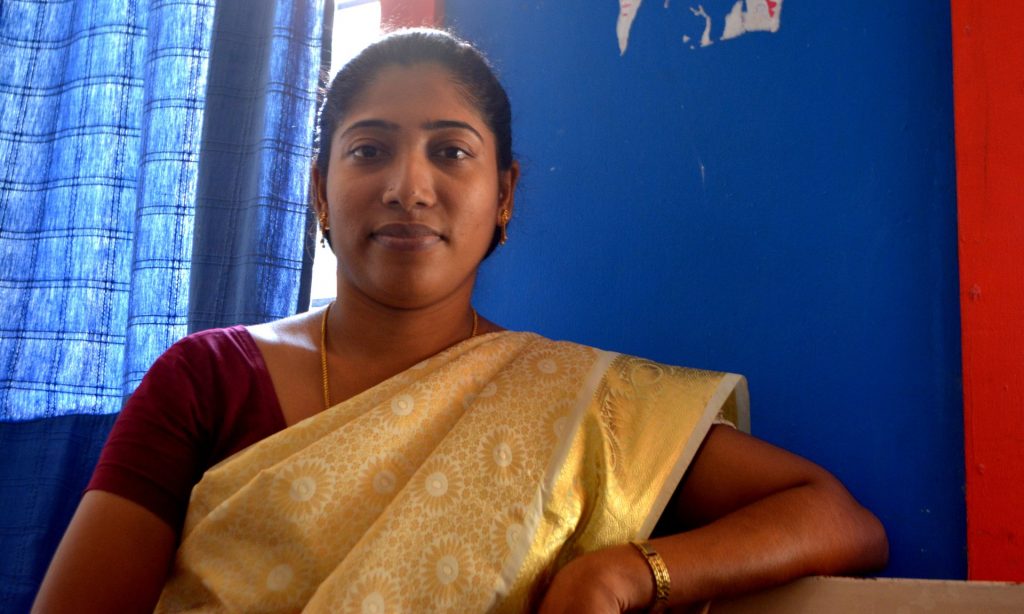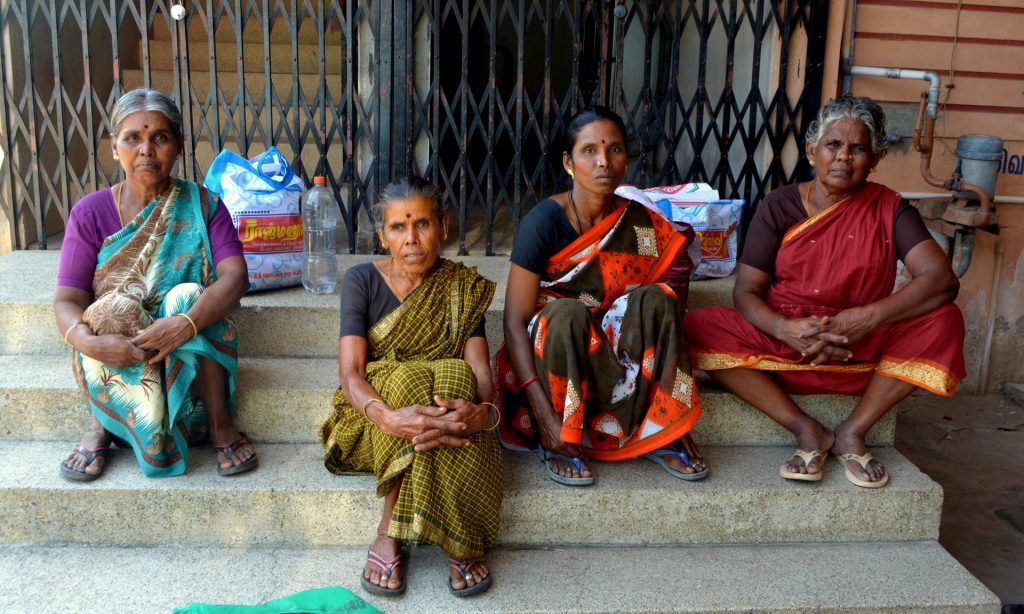Three days after she gave birth to a healthy baby girl, Susheela* is in the operating theatre. Her procedure will take only 10 minutes. A small scar below her bellybutton, hardly visible, is the only mark the doctors will leave behind.
At 27, the mother of two is getting permanently sterilised.
After the operation, Susheela calls her husband and says she’ll be home in time for dinner.
Up to 20 women will undergo the same operation each day at the family planning clinic in Ellis Nagar, in the south Indian city of Madurai.
Susheela chose to be sterilised. The same goes for other women in the waiting room, with some of the clinic’s patients as young as 20.
Sterilisation for these women has almost become a rite of passage. Mothers bring their daughters, and women who have recently had babies come straight from the delivery room. Outside the clinic, women loop cloth around metal bars to make hammocks for the newborns that they bring with them.

The clinic offers vasectomies too, a quicker and simpler sterilisation procedure for men, but men rarely come, often because their wives don’t want them to. “Men are the workers in the family. They need to go and work. It’s better for us to do the operation,” says Chitra, a woman outside the clinic. “We believe that men lose their strength by having it done.”
More than 4 million women were permanently sterilised in 2014-15 (pdf). In contrast, only about 90,000 men had vasectomies. The government says 1,434 people died from the procedures between 2003 and 2012, almost all of them women.
Social stigma, and the legacy of India’s forced family planning programmes, has kept men away from clinics.
However, a new government policy could see the decades-long female-centred family planning initiatives shift their focus to men.
According to figures from the Ministry of Women and Child Development, only 5% of sterilisations are performed on men. The government wants that figure to rise to 30% under a draft national health policy. “The idea is that men and women must equitably share the responsibility of planning or spacing the birth of children,” a ministry spokesperson says.
India’s population of 1.3 billion is now the second largest in the world, after China. The policy is an attempt to stem population growth.
But previous family planning programmes involving sterilisation have proved controversial.
Donors including the UK and the US were criticised for supporting recent sterilisation drives following complaints that people were coerced into surgery.
In 2014, sterilisation became an international scandal after 12 women died in botched surgeries in the state of Chhattisgarh. Some critics labelled the programme anti-women and called on donors to stop their funding. Poor hygiene and unskilled doctors in some clinics put women in serious danger.
India was the first country to launch a family planning programme, in 1952. In the 1970s, prime minister Indira Gandhi launched mass forced sterilisation programmes, with money from the World Bank, the UN population fund and the Swedish international development authority. Estimates of the number of deaths from the programme range from 300 to thousands.
In 1976, 8 million people were sterilised under the programme, which was targeted at poor people, including ethnic minorities and lower castes.
Government employees from railway ticket collectors to schoolteachers were asked to participate and help meet sterilisation quotas. State governments competed to beat targets. Villagers recall being forced to mobile sterilisation camps by armed police.
For men, the vasectomy camps were a symbol of emasculation and humiliation. Many remember the horror of those years and refuse to participate. Others can’t bear the social stigma that vasectomies carry.
As a result, family planning campaigns target poor women. The top 10 states prioritised by government plans (pdf) include Odisha, Bihar and Uttar Pradesh, home to some of India’s poorest communities.
In the southern state of Tamil Nadu, years of counselling programmes in villages, schools and workplaces, coupled with the rising cost of living, prompts dozens of women to visit the clinic in Ellis Nagar every day.
“We do it by our own will – the government doesn’t force us,” says one woman, Muneshwari. “Mostly I did it because it is so expensive to have children. The cost of educating them, looking after them – everything is expensive.”
Many of the women who come to the clinic are young. “They get married around 18. Within two years they are giving birth to their second babies. At the age of 20, 21, they come for sterilisation,” says B Ashifa, a family planning programme officer at the clinic.
The clinic offers other family planning: condoms, the pill, a copper coil, all free in government centres.

But many women choose sterilisation because temporary alternatives are taboo. The pill is considered promiscuous, and many men refuse to wear condoms. Increasing numbers of women are choosing a coil (pdf), and the government is attempting to make injectable contraceptives more widely available.
But there’s another reason. “Women get 500 rupees [£5] if they are sterilised, men get 1,300. They get nothing if they opt for another method,” says Ashifa.
“We do tubectomies every single day, but there are very few men who come here, so we do vasectomies only one day a month.”
Dipak Joshi, of the Men’s Rights Association, says raising awareness about the procedure and debunking myths that sterilisation affects masculinity will be needed to change minds. “If there is a common understanding between a man and his wife, that they don’t want to have more children, then there’s nothing that is stopping men from [having] a vasectomy. The problem at the moment is that there is a lack of awareness about it.
“In a relationship between a man and a woman, men should also take some of the responsibility. But we also have to think about the problems that men face. There is an overemphasis on women’s problems in society and many men are unwilling to speak about problems that they have. If we can address those problems, and assure them that the operation is safe, then men will come forward themselves.”
*Surname not used to protect identity

